Related Research Articles
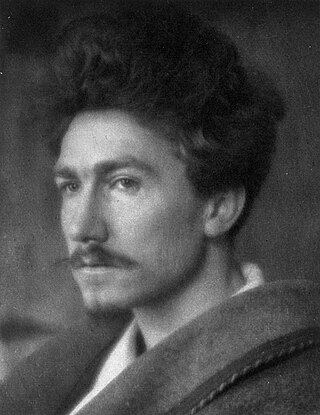
Imagism was a movement in early-20th-century Anglo-American poetry that favored precision of imagery and clear, sharp language. It is considered to be the first organized modernist literary movement in the English language. Imagism is sometimes viewed as "a succession of creative moments" rather than a continuous or sustained period of development. The French academic René Taupin remarked that "it is more accurate to consider Imagism not as a doctrine, nor even as a poetic school, but as the association of a few poets who were for a certain time in agreement on a small number of important principles".
John Edgell Rickword, MC was an English poet, critic, journalist and literary editor. He became one of the leading communist intellectuals active in the 1930s.

Jack Lindsay was an Australian-born writer, who from 1926 lived in the United Kingdom, initially in Essex. He was born in Melbourne, but spent his formative years in Brisbane. He was the eldest son of Norman Lindsay and brother of author Philip Lindsay.
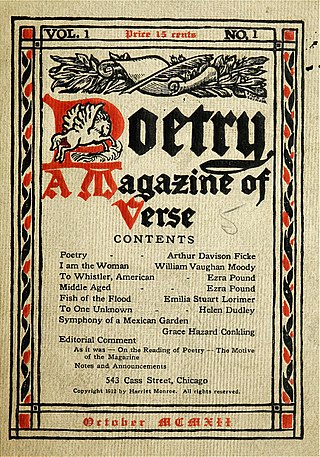
A literary magazine is a periodical devoted to literature in a broad sense. Literary magazines usually publish short stories, poetry, and essays, along with literary criticism, book reviews, biographical profiles of authors, interviews and letters. Literary magazines are often called literary journals, or little magazines, terms intended to contrast them with larger, commercial magazines.

Percy Reginald Stephensen was an Australian writer, publisher and political activist, first aligned with communism and later shifting support towards far-right politics. He was the co-founder of the fascist Australia First Movement, alongside businessman William Miles, and he was the author of The Foundations of Culture in Australia.
The Criterion was a British literary magazine published from October 1922 to January 1939. The Criterion was, for most of its run, a quarterly journal, although for a period in 1927–28 it was published monthly. It was created by the poet, dramatist, and literary critic T. S. Eliot who served as its editor for its entire run.

The English Review was an English-language literary magazine published in London from 1908 to 1937. At its peak, the journal published some of the leading writers of its day.

James Douglas (1867–1940) was a British critic, newspaper editor and author.
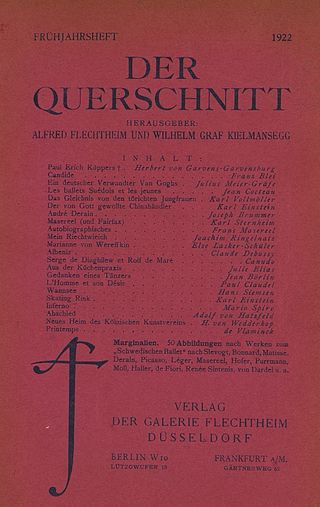
Der Querschnitt was an art magazine published by German art dealer Alfred Flechtheim between 1921 and 1936. The magazine was based in Berlin.
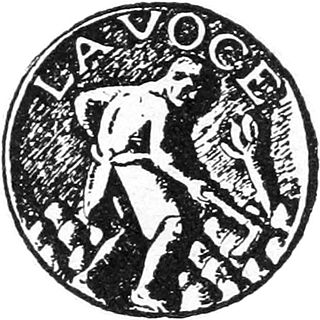
La Voce was an Italian weekly literary magazine which was published in Florence, Italy, between 1908 and 1916. The magazine is also one of the publications which contributed to the cultural basis of the early forms of Fascism.
Campo di Marte was a literary magazine published briefly from 1938 to 1939 in Florence, Italy.
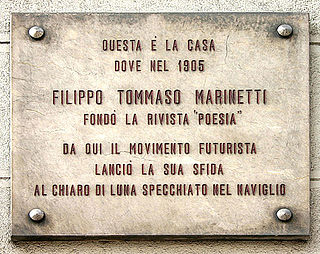
Poesia is an Italian magazine founded by Filippo Tommaso Marinetti in Milan in 1905 which was closely associated with the Italian Futurist movement. During its early existence a total of thirty-one issues were published until the 1920s. It was headquartered in Verona.

Tilskueren was a monthly cultural and literary magazine published in Copenhagen, Denmark, between 1884 and 1939. It was continuation of another magazine, Det nittende Aarhundrede, which was founded by Georg and Edvard Brandes. The subtitle of Tilskueren was Maanedsskrift for Litteratur, Samfundsspørgsmaal og almenfattelige videnskabelige Skildringer.
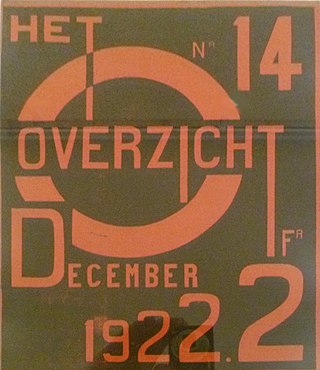
Het Overzicht was a Dutch language literary magazine published in Antwerp, Belgium, between 1921 and 1925. Until its cessation in 1925 it was the major avant-garde magazine in the country and published a total of 24 issues.
Il Frontespizio was an Italian art and literary magazine, which had a Catholic perspective. The magazine existed between 1929 and 1940 and was based in Florence, Italy.
Solaria was a modernist literary magazine published in Florence, Italy, between 1926 and 1936. The title is a reference to the city of sun. The magazine is known for its significant influence on young Italian writers.
Shi'r was an avant-garde and modernist monthly literary magazine with a special reference to poetry. The magazine was published in Beirut, Lebanon, between 1957 and 1970 with a three-year interruption. The founders were two leading literary figures: Yusuf al-Khal and Adunis. It was named after Harriet Monroe’s Chicago-based magazine, Poetry.
The Midland was a regional little magazine which was published between 1915 and 1933 in the United States. Its subtitle was A Magazine of the Middle West between its start in 1915 and 1929. Then it was changed as A National Literary Magazine which was used until its closure in 1933. It was the most significant regional little magazine of the period.
La Gaceta Literaria was a bimonthly avant-garde literary, arts and science magazine which appeared in Madrid between 1927 and 1932. It is known for its leading contributors and editorial board members.
Ultra was an avant-garde bilingual art and literature magazine which appeared in Finland in 1922. Its subtitle was tidskrift för ny konst och litteratur. Although it produced only eight issues, it played a significant role in the introduction of avant-garde literary approach in the region.
References
- 1 2 3 John T. Connor (August 2020). "Fanfrolico and After: The Lindsay Aesthetic in the Cultural Cold War". Modernist Cultures. 15 (3): 278–279. doi:10.3366/mod.2020.0297. S2CID 225448083.
- 1 2 3 4 5 Barry Cole (1965). "Nihil Humani Alienum A Me Puto: Retrospect 15--The London Aphrodite". Ambit (24): 36–38. JSTOR 44330313.
- ↑ "The London Aphrodite". University of Technology Sydney Libraries. Retrieved 27 September 2022.
- ↑ Benjamin Gilbert Brooks (January 1930). "London Note". Poetry . 35 (4): 217. JSTOR 20577391.
- ↑ Peter Brooker; Andrew Thacker, eds. (2013). "General Introduction". The Oxford Critical and Cultural History of Modernist Magazines. Vol. I. Oxford: Oxford University Press. p. 16. doi:10.1093/acprof:osobl/9780199654291.001.0001. ISBN 9780199211159.